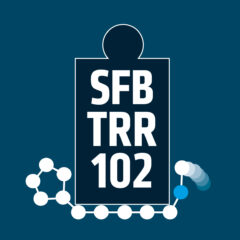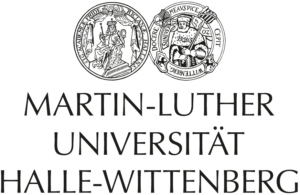Substrate-induced molecular order and nucleation in thin films
Marthinus van Niekerk
Chain connectivity of tetra-PEG – tetra-PCL amphiphilic end-linked polymer model networks
Lucas Löser
date: August 24, 15.00
hybrid seminar: VSP3, 1.12 + zoom
chair: Christian
Abstracts
Substrate-induced molecular order and nucleation in thin films
by Marthinus van Niekerk
Understanding the crystallization behaviour of polymers is important for describing the physical properties of polymeric materials. Polymer crystal growth follows nucleation which can occur via mechanisms of homogeneous nucleation or heterogeneous nucleation. Homogeneous nucleation takes place when random fluctuations in the polymer bulk initiates crystal growth. Heterogeneous nucleation occurs at an interface which lowers the free energy barrier to nucleation. In addition, crystal growth can be initiated at an interface by prefreezing which can be described by a recently developed phenomenological theory of first-order prefreezing. During prefreezing, a thin layer of crystallized polymer is formed at the substrate-polymer interface above the bulk melting temperature. This process is not very well understood and many questions are still open. The aim of project B03 is to investigate the effects of different substrates on nucleation and prefreezing of polymers. Previously, homogeneous nucleation has been observed for PCL on a PDMS substrate while prefreezing has been investigated for PCL on MoS2 and HOPG. Currently, project B03 has three main goals. Firstly, to identify a substrate that leads to heterogeneous nucleation of PCL and attempt to explain why this mechanism of nucleation is dominant. Secondly, to further investigate prefreezing and its effects on crystallization kinetics. Thirdly, to explore crystallization from solution and to determine the effects on the mechanism of nucleation and crystallization kinetics.
Chain connectivity of tetra-PEG – tetra-PCL amphiphilic end-linked polymer model networks
by Lucas Löser
A new approach for the synthesis of model-like amphiphilic co-networks is introduced, and their structure analysed by static 1H time-domain nuclear magnetic resonance (NMR) methods and x-ray scattering techniques. The novel approach of hetero-complementary end-linking [1] of two well-defined tetra-armed polyethylene glycol (PEG) stars based on Sakai et al. [2] is used and modified in a way, that amphiphilic tetra-PEG – tetra-PCL gels are obtained. By using static 1H-1H multiquantum-NMR, as initially performed by Lange et al. [3], we show that our method is capable of distinguishing different chain species in the swollen PEG-PCL networks, allowing quantification of network connectivity defects arising from the end-linking reaction of A4- and B4-type stars, as well as accurate quantification of inelastic material. The parameter space of the synthesis is explored and changes in microscopic network structure are studied by NMR and SAXS depending on polymer concentration, solvent and different temperature programs during synthesis. The results are compared with predictions from theory and MD-simulations.
[1] Jakisch, L. et al.; Macromol. Chem. Phys 2017, 219
[2] Sakai, T. et al.; Macromolecules 2008, 41
[3] Lange, F. et al.; Macromolecules 2011, 44




